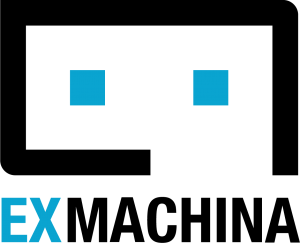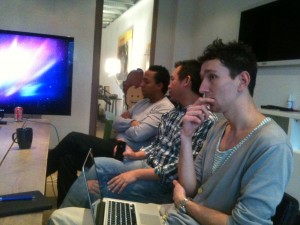
On Wednesday 7 March 2012 we were invited for a meeting with The Widget Company (TWC). We got in contact with them through James Tjan, project manager at NOS New Media. The Widget Company is a development partner for the NOS, they are the first full service widget agency in the Netherlands. Their team develops and creates online campaigns and widgets for web, desktop, mobile and television. They are market leader in the development of Samsung Smart TV apps.
The setup of this meeting was to be engaged from the beginning with the development partner of the NOS, ensuring we are well informed about the possibilities and technical issues of the Dutch Connected TV-landscape. First we got a short pitch from Rutger Pinas, CEO of TWC, about their recent projects. After that we gave an introduction about our team and the project assigner, also we spoke about some first insights and possibilities that came up during our research phase.
This merged into a brainstorm session were we spoke about our vision of the ideal Connected TV landscape. We believe that a Second Screen user must be able to connect with the TV, redaction and with other users. The output of this interaction must be visible on an overlay on the TV. In an ideal world the output of the interaction shown is just the information that is relevant for the user. So every user gets different parts of the information based on his or her unique properties. TWC has the experience and know-how of all the pro’s and con’s concerning previously stated.

During our research phase we discovered that Connected TV in the Netherlands is far from reaching its full potential. The dutch market is very much fragmented, making it hard for developers to reach their full target audience. Despite the fact its hard to embark on this course, it is important to not let this interfere with the creative process. It’s important to keep all options open while connecting. During the conversation it got more and more clear to us what the different possibilities on the area of Connected TV in the Netherlands are, and just as important what is not possible.
Compared to the United Kingdom and Germany our country has a long road ahead. Open standards like HbbTV are slowly starting to integrate in the Dutch landscape. Next to that possibilities to show information on the TV screen only relevant to that single viewer are non-existent. This renders it impossible to show different viewers a different interactive layer, ie. input shown based on friends/location.
De properties of a television are very different from those of a second screen device. TWC urged us to keep this in mind. Second Screen functionality on a Connected TV doesn’t work; Video-on-Demand does. In the case of using Second Screen as well as Connected TV the amount of call-to-actions is important, and remember your application only works if it adds value.
This meeting made us very much aware of the possibilities and possible roadblocks ahead. Core stays added value for the end user. De application has to be easy accessible. This will be used as input and red line for further research. Hopefully The Widget Company gives us the opportunity to come back in the concept phase so we can share our concepts and use their knowledge for feedback



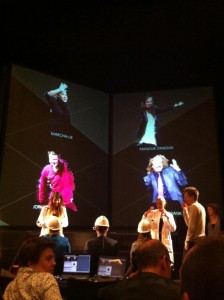

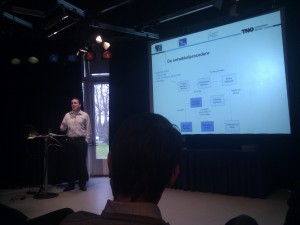
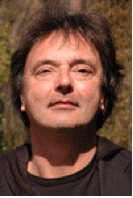 On the 6th of March 2012 we did an interview with Rob Prass, teacher at the Hogeschool van Amsterdam University of Applied Sciences. The reason why we did the interview is because Rob knows a lot about Television and Interactive Television Formats.
On the 6th of March 2012 we did an interview with Rob Prass, teacher at the Hogeschool van Amsterdam University of Applied Sciences. The reason why we did the interview is because Rob knows a lot about Television and Interactive Television Formats.